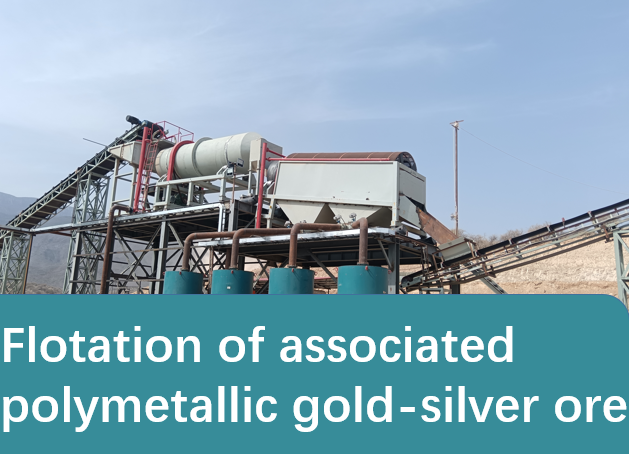Flotation of associated polymetallic gold-silver ores
2025-07-09 Xinhai (1083)
2025-07-09 Xinhai (1083)
If you have any questions, please contact us through the following ways, we will give you more and better assistance!

Floating is the primary mineral processing method for treating various types of gold ore, applicable to low-sulphide gold ore, high-sulphide gold ore, and polymetallic gold-silver ore. It effectively separates various gold-silver sulphide concentrates, enabling comprehensive recovery and utilization of mineral resources.
Floating selection typically requires determining the specific process flow based on the properties of the gold and silver ore and the specifications of the product. The floating selection process primarily includes mixed floating selection-concentrate separation, stepwise floating selection, rapid floating selection, and priority floating selection. However, for polymetallic gold and silver ore, it is difficult to extract gold in a single step through floating selection, so floating selection is often combined with other processes. Common combined separation processes include:
First, sulfide minerals from gold and silver-bearing quartz veins are subjected to flotation, and the flotation concentrate is then treated with cyanidation. Compared to the whole-ore cyanidation process, cyanidation of flotation concentrate does not require grinding of the entire ore body, offering advantages such as reduced ore feed volume, energy savings, smaller plant footprint, and lower capital investment.
This process is commonly used for difficult-to-dissolve gold-arsenic ores, gold-antimony ores, and gold-pyrite ores with high sulphide content. Roasting is used to remove arsenic, antimony, and other elements harmful to the cyanidation process.

This method is primarily used for polymetallic sulphide ores containing gold and silver. During flotation, gold and silver enter the concentrates of closely associated metals such as copper and lead, which are then sent to a smelter for recovery.
The middlings and tailings from flotation generally still contain relatively high levels of gold and silver, so they require further cyanidation for recovery. This process is suitable for treating quartz sulphide ores containing telluride minerals, pyrrhotite, chalcopyrite, and other sulphide minerals. The ore is floated to produce sulphide concentrate, which is then roasted and subjected to cyanidation to recover gold and silver from the sulphide minerals.
When gold and silver associated with sulphides in the ore cannot be completely recovered by cyanidation, the cyanidation residue can be further processed by flotation to improve the recovery rate of gold and silver.